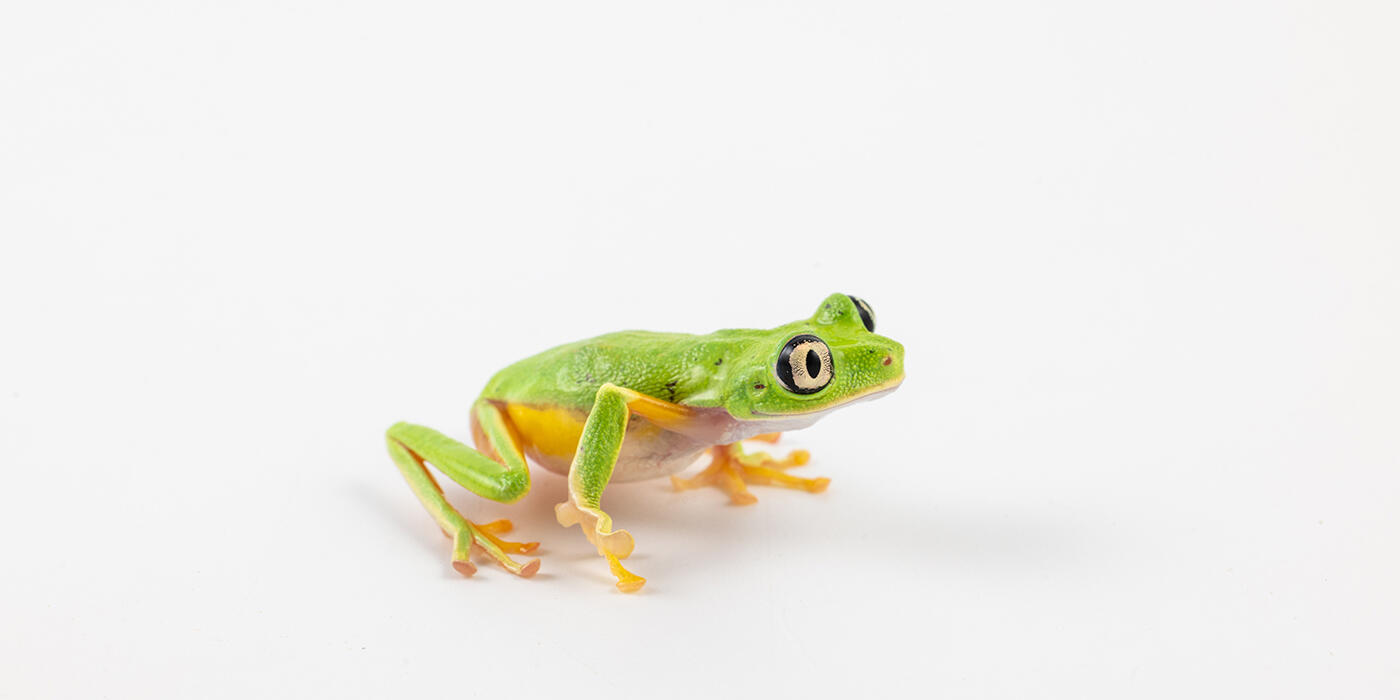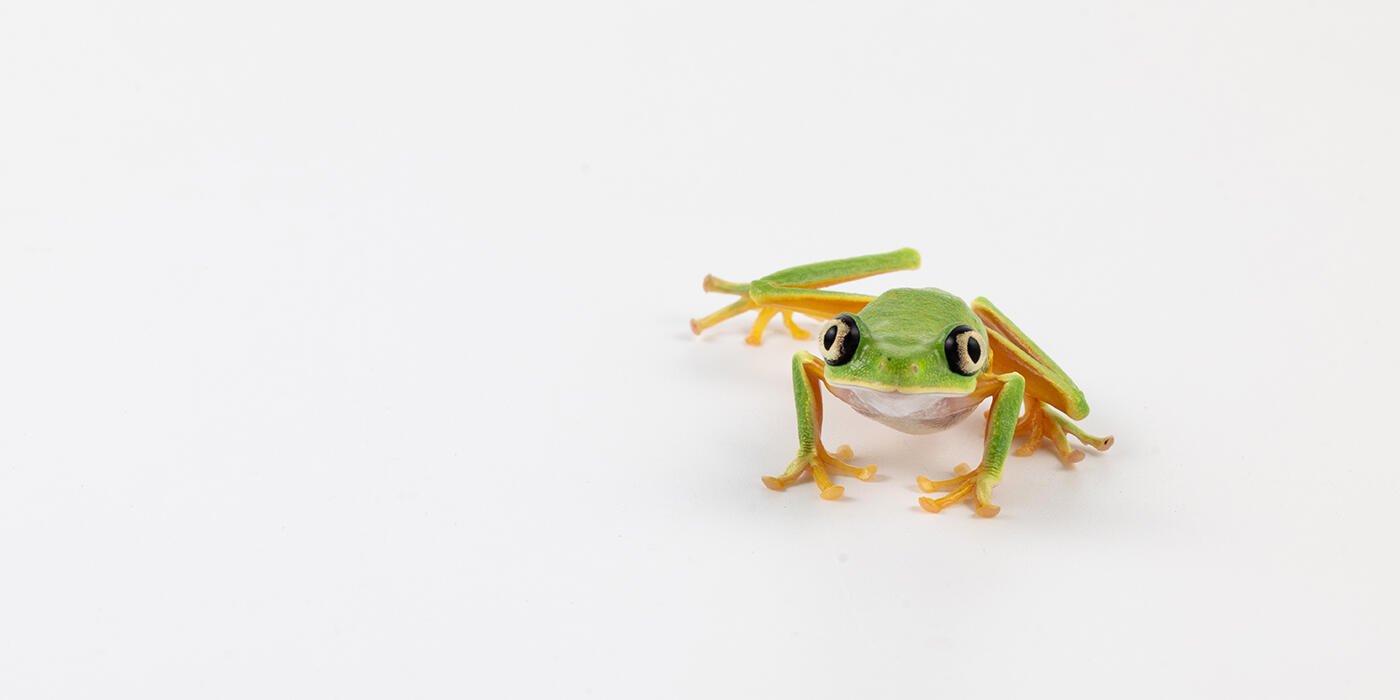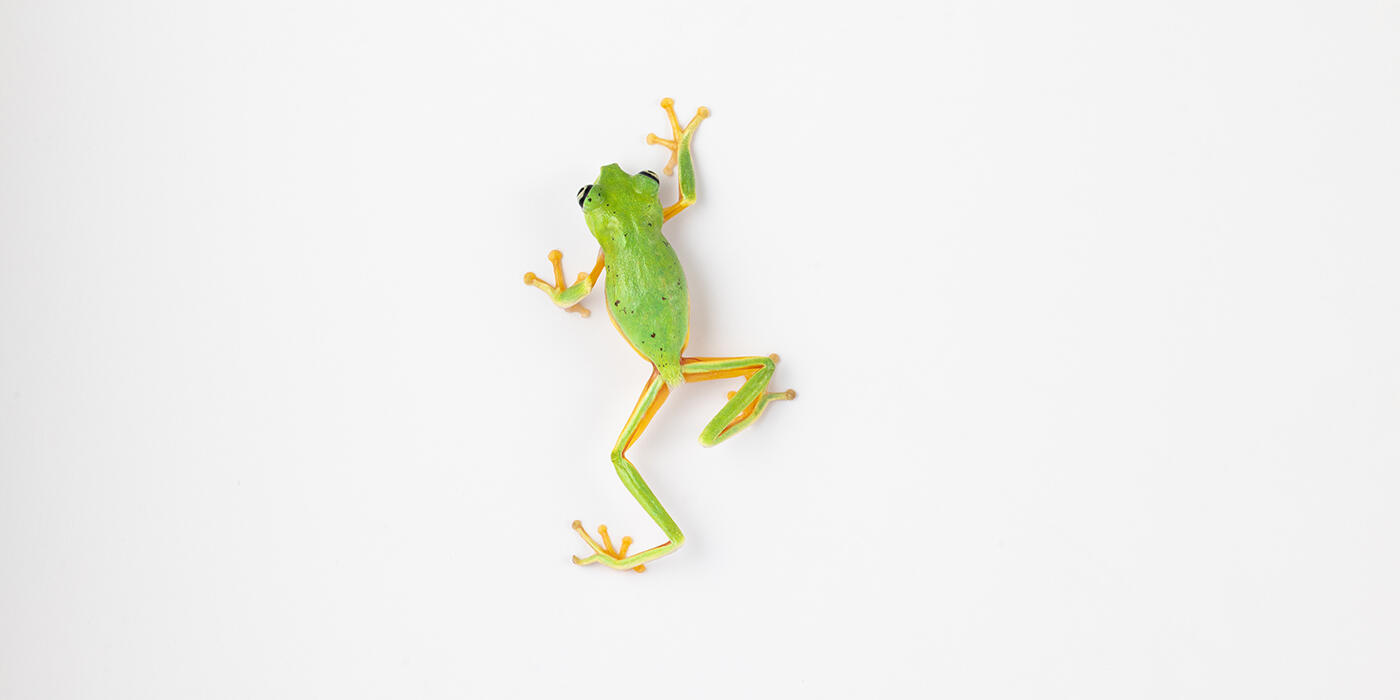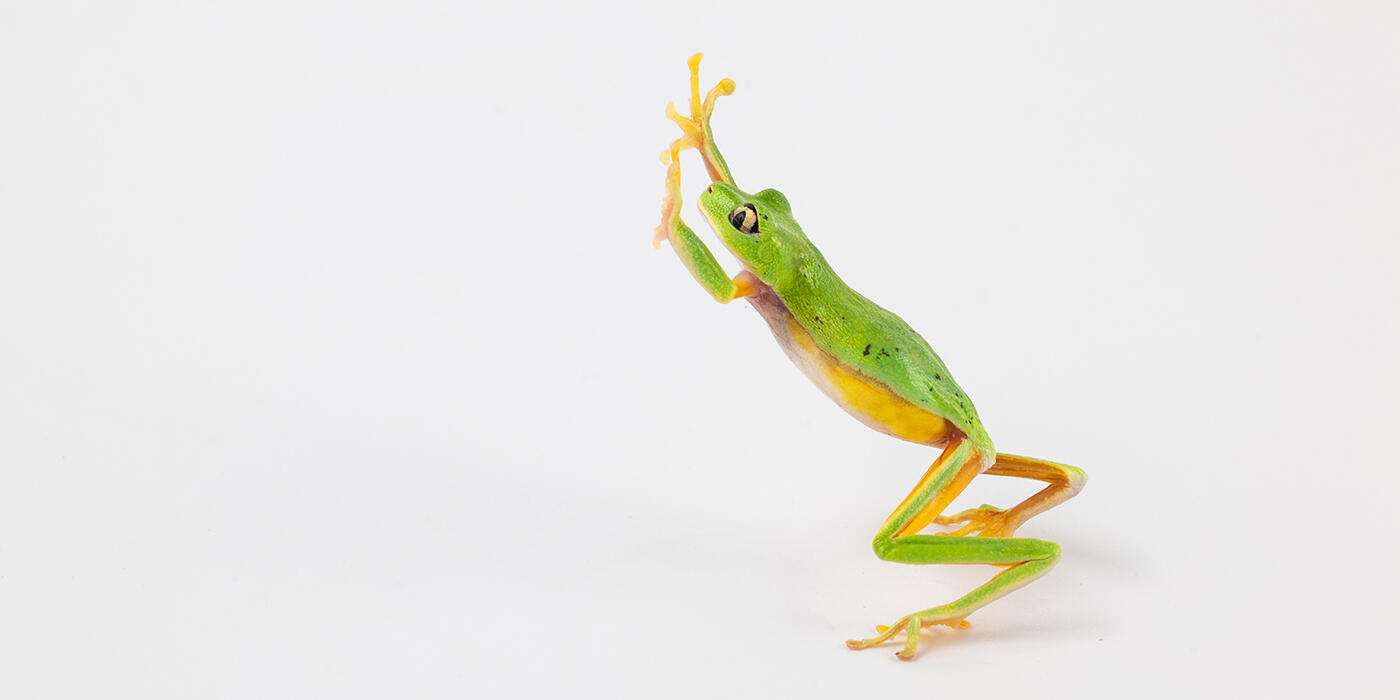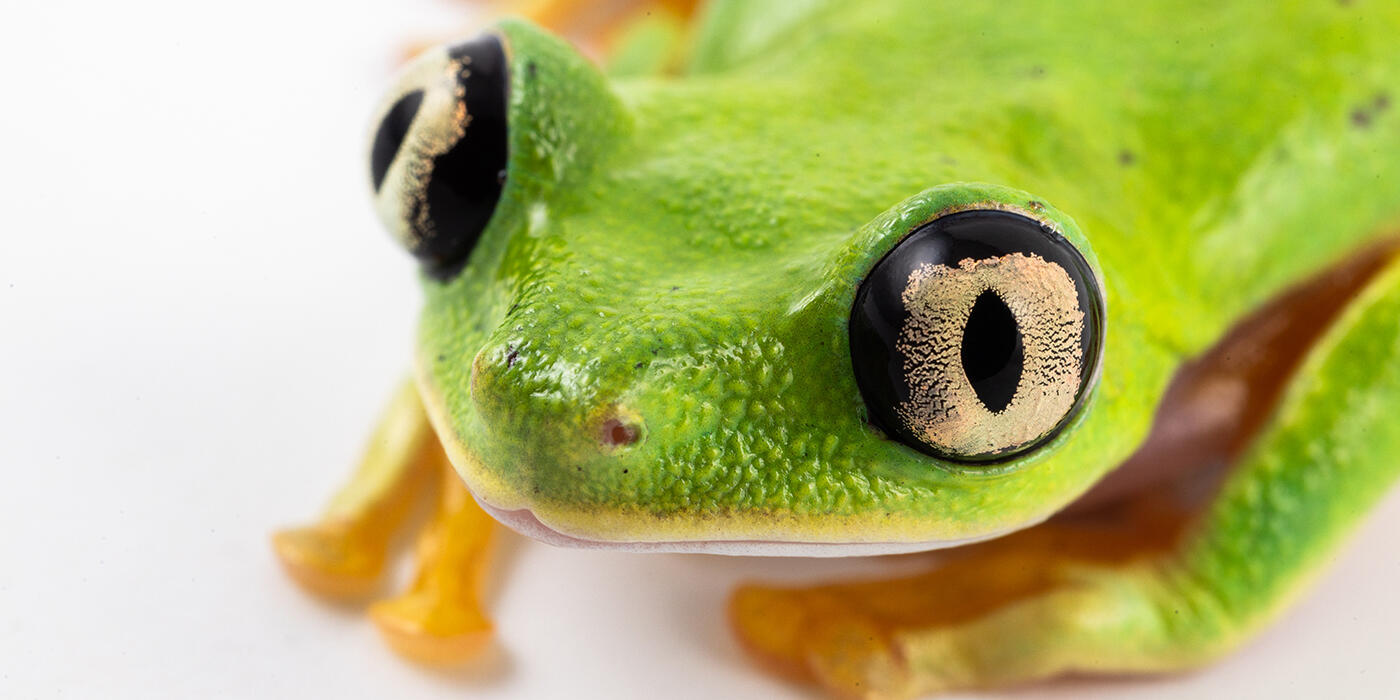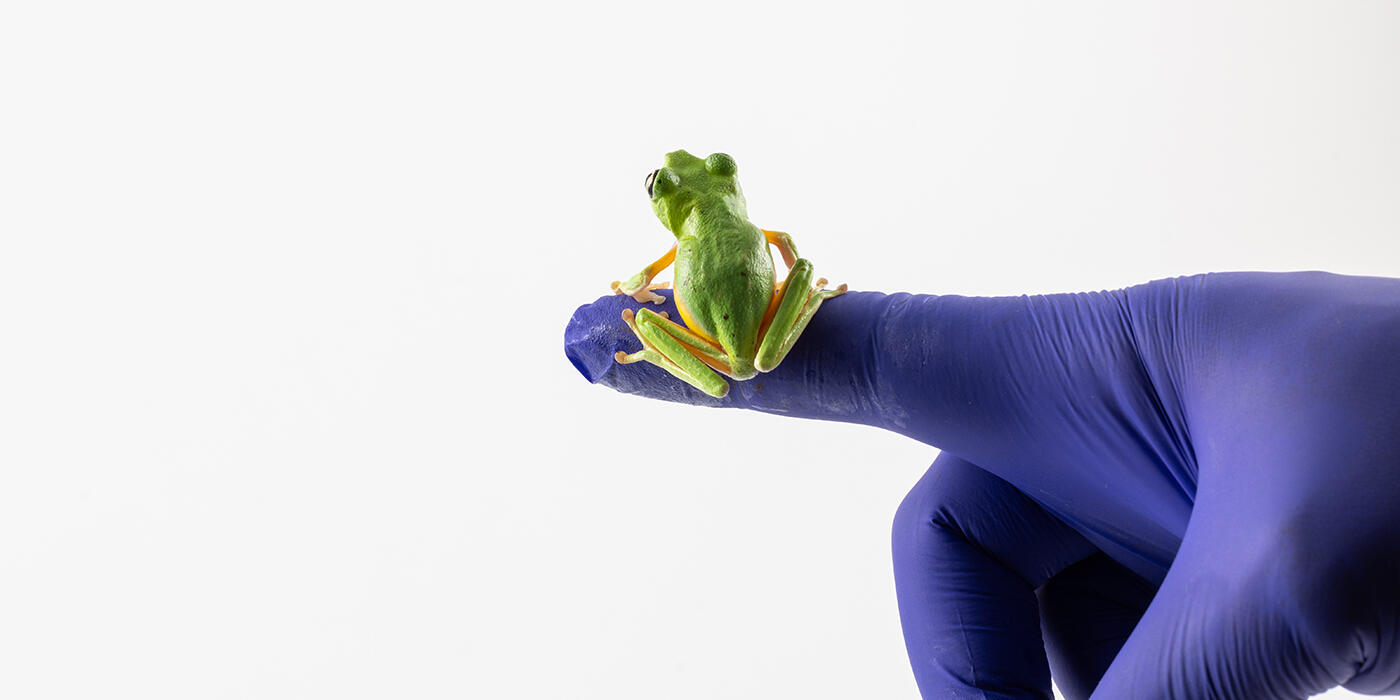Lemur leaf frogs, also called lemur tree frogs, are small, critically endangered frogs native to Central America. Their bright, yellow-green skin helps them camouflage among leaves during the day. At night, when these nocturnal frogs are most active, their skin turns brown.
Physical Description
Lemur leaf frogs are bright yellowish-green with dark flecks or spots on their dorsal (back) side. Their hands, feet and flanks are yellow, and their bellies are white. A thick, black line surrounds each eye. Their color can change depending on their activity. At night, when they are active, their yellow-green skin turns brown and their eyes turn dark gray.
Leaf frogs have thin bodies, arms and legs, and their fingers and toes are not webbed. They move slowly, walking hand over hand, and rarely jump unless escaping from danger.
Size
Female leaf frogs are typically larger than males, ranging from 4-5 centimeters long while males are 3-4 centimeters long.
Native Habitat
Lemur leaf frogs are found in Costa Rica, Panama, and some areas of Colombia. They live in forests on sloping mountainsides and in the humid uplands and lowlands. These frogs have been extirpated, or wiped out, of parts of their previous range and are critically endangered where they currently live.
Lifespan
Lemur leaf frog lifespan is estimated to be between five and 10 years.
Communication
Lemur leaf frogs are territorial, and males call with a short “tick” to warn other males they are nearby. Calls are around 0.2 seconds long, with about 40 pulses per second.
Male leaf frogs aggressively defend their territory. A resident male will clasp an intruder male or unreceptive female and try to push them off their perch. Males also produce a release call if grasped by another male.
Food/Eating Habits
In the wild, lemur frogs eat insects and other small invertebrates. At the Smithsonian's National Zoo, they are fed crickets, fruit flies, worms and beetles.
Reproduction and Development
These frogs typically breed during the rainy season (April to July). Males call to females from plants near (or overhanging) pools and slow-moving streams. Males grasp females in the mating position, called amplexus, and females lay clutches of 15 to 20 eggs. They may lay two or three clutches per night, depositing the egg masses in a single or double layer.
Eggs are deposited on the surface or underside of leaves that hang over the water. The ambient humidity keeps the eggs moist as they develop, and rain triggers the larvae to "wiggle" out of the eggs and fall into the water below.
The larvae hatch seven to 14 days after fertilization, and the embryos are light green. Metamorphosis, the transformation from an immature to an adult form in stages, generally occurs 69 to 98 days after hatching. Lemur leaf frog tadpoles can also change color day to night but do not have the same yellow or orange side coloration as adults.
Conservation Efforts
Lemur leaf frog populations have declined more than 80% in the last 10 years. This continuing trend is believed to be a result of rapid habitat loss, as well as chytridiomycosis, the disease caused by amphibian chytrid fungus.
Although leaf frogs appear to have some resistance to chytridiomycosis, they have had tremendous population losses and currently only occupy about half of their historic range. Their greatest threat is habitat loss, especially in Costa Rica where their range is impacted by deforestation.
This species has been bred successfully in managed care at a handful of zoos, including the Smithsonian's National Zoo and Conservation Biology Institute. The continued successful breeding of these frogs ensures that the population in human care maintains a high level of genetic diversity. The goal of breeding programs like these is to build an assurance population that could be restored to the wild, if and when the time and conditions are appropriate.
Help this Species
Reduce, reuse and recycle — in that order! Cut back on single-use goods, and find creative ways to reuse products at the end of their life cycle. Choose recycling over trash when possible.
Practice ecotourism by being an advocate for the environment when you’re on vacation. During your travels, support, visit or volunteer with organizations that protect wildlife. Shop smart too! Avoid buying products made from animals, which could support poaching and the illegal wildlife trade.
Conservation starts with you! Join a citizen science project where you can help collect valuable data for scientists. Encourage your friends and family to get involved too.
Less is more. Cut down on the demand for resources by consuming less. Buy only what you need, and look for pre-owned or repurposed items before purchasing something brand new.
Meet the Animals
Smithsonian's National Zoo and Conservation Biology Institute. (n.d.). Lemur leaf frog. Retrieved January 2, 2026, from https://nationalzoo.si.edu/animals/lemur-leaf-frog
